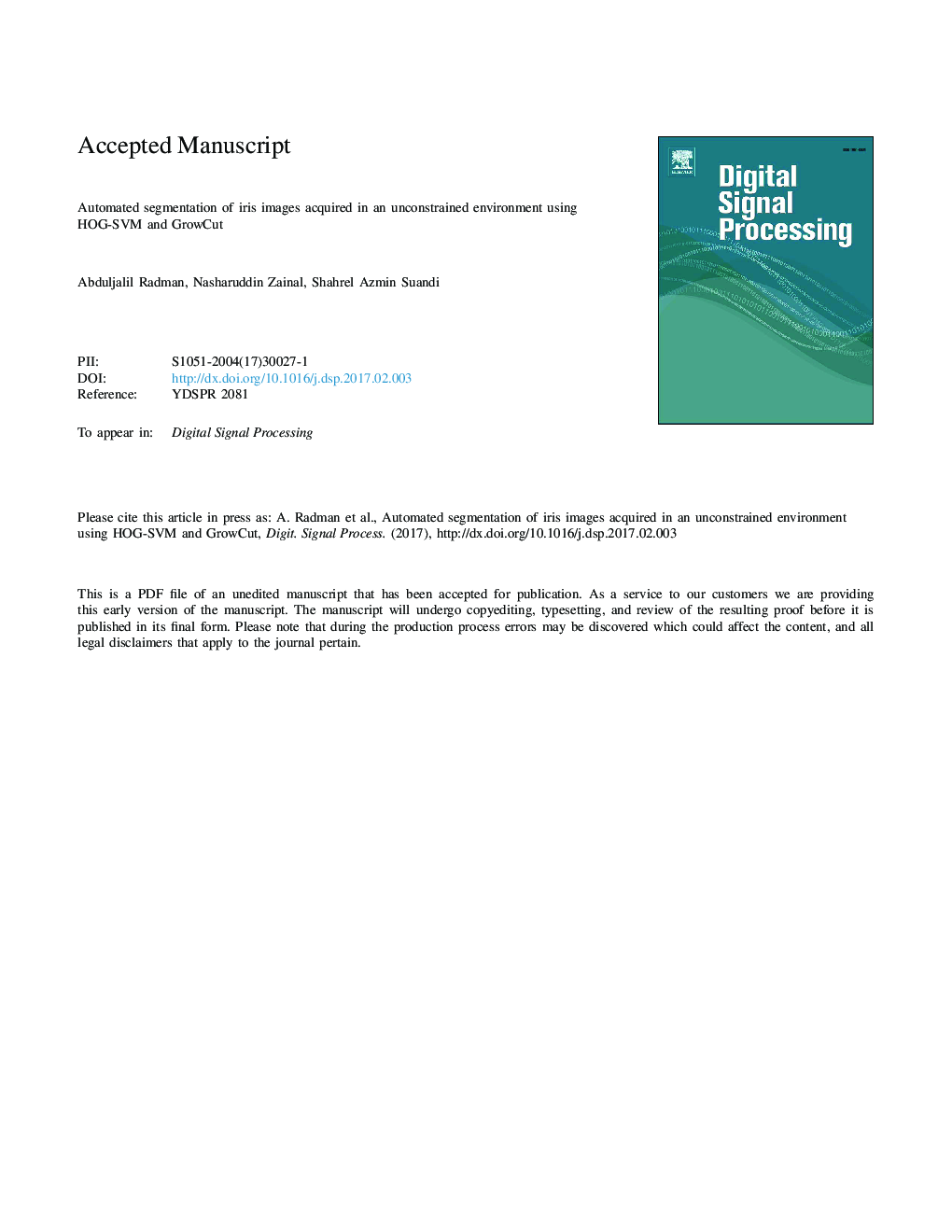| Article ID | Journal | Published Year | Pages | File Type |
|---|---|---|---|---|
| 4973986 | Digital Signal Processing | 2017 | 33 Pages |
Abstract
Iris recognition systems have demonstrated considerable improvement in recognizing people through their iris patterns. Recent iris recognition systems have focused on images acquired in unconstrained environments. Unconstrained imaging environments allow the capture of iris images at a distance, in motion and under visible wavelength illumination which lead to more noise factors such as off-focus, gaze deviation, and obstruction by eyelids, eyeglasses, hair, lighting and specular reflections. Segmenting irises taken in an unconstrained environment remains a challenging task for iris recognition. In this paper, a new iris segmentation method is developed and tested on UBIRIS.v2 and MICHE iris databases that reflect the challenges in recognition by unconstrained images. This method accurately localizes the iris by a model designed on the basis of the Histograms of Oriented Gradients (HOG) descriptor and Support Vector Machine (SVM), namely HOG-SVM. Based on this localization, iris texture is automatically extracted by means of a cellular automata which evolved via the GrowCut technique. Pre- and post-processing operations are also introduced to ensure higher segmentation accuracy. Extensive experimental results illustrate the effectiveness of the proposed method on unconstrained iris images.
Related Topics
Physical Sciences and Engineering
Computer Science
Signal Processing
Authors
Abduljalil Radman, Nasharuddin Zainal, Shahrel Azmin Suandi,
